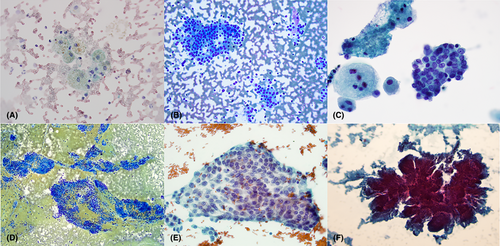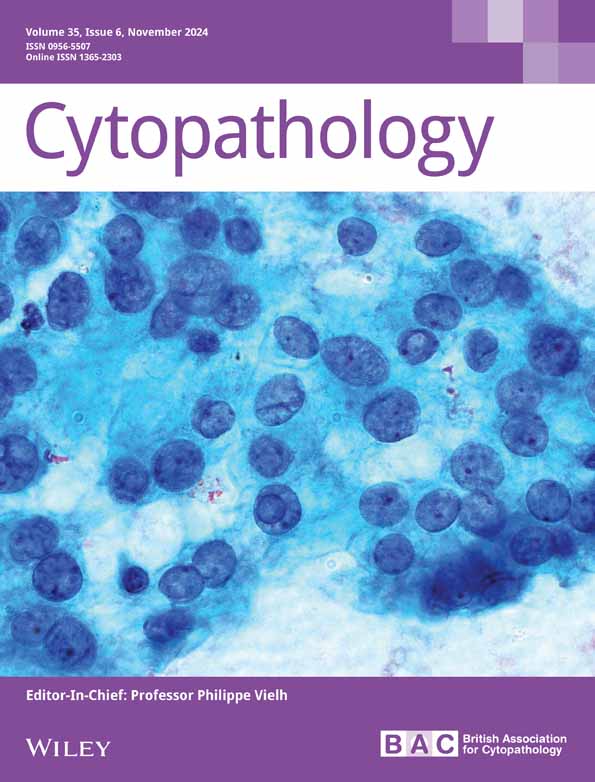The Bethesda System for Reporting Thyroid Cytopathology in the African American population: A tertiary centre experience
Abstract
Background
The reported risk of malignancies (ROM) remains controversial for fine needle aspiration (FNA) of thyroid nodules in the African American (AA) population. Herein, the ROM along with frequency was assessed for each of the Bethesda System for Reporting Thyroid Cytopathology (TBSRTC) diagnostic categories.
Materials and Methods
The electronic pathology archive of a large academic hospital was retrospectively searched for cytopathology reports of thyroid nodules in AA patients (2010–2019) and Non-African American (NAA) control cases. The patients' demographic, thyroid nodule characteristics, FNA results using TBSRTC and surgical diagnoses were recorded, whenever available.
Results
Three hundred ninety-one cases were identified, 317 females (81.1%) and 74 males (18.9%) with median age 50.0 (SD = 14.4). The mean size of the nodules was 2.1 cm (SD = 1.4). The Bethesda categories were: 5.4% (I), 35.0% (II), 35.3% (III), 7.7% (IV), 3.3% (V) and 13.3% (VI). The overall ROM of thyroid nodules was 43.8% (89/203) on surgical follow-up (203/391). The ROM in each Bethesda categories were: 33.3% (I), 11.6% (II), 35.2% (III), 15.8% (IV), 83.3% (V) and 100% (VI) on surgical follow-up. The frequency of thyroid nodules was higher in AA females; however, the ROM was higher in AA males (48.3%) compared with AA females (41.2%).
Conclusion
The ROM in Categories I, II and III was higher than those reported in the TBSRTC while being similar in Categories IV, V and VI. The overall risk of thyroid malignancy in our AA patient population was higher than those in the literature. The overall ROM of thyroid nodules in AA males was higher than of AA females.
Graphical Abstract
The thyroid nodules are more frequently seen in African American females than males while the risk of malignancy is higher in thyroid nodules in males. The risk of malignancy in Categories I, II and III is higher than those reported in the TBSRTC while being similar in Categories IV, V and VI.
Thyroid nodules are more frequently seen in African American (AA) females than AA males while the risk of malignancy is higher in thyroid nodules in males. In African Americans, the risk of malignancy in Categories I, II and III is higher than those reported in the TBSRTC while being similar in Categories IV, V and VI. The overall risk of thyroid malignancy in this AA patient population is higher (43.8%) than the previously reported overall risk of malignancy (36%) in the literature.
CONFLICT OF INTEREST STATEMENT
The authors have no financial conflicts of interest to declare.
Open Research
DATA AVAILABILITY STATEMENT
The data that support the findings of this study are available on request from the corresponding author. The data are not publicly available due to privacy or ethical restrictions.





